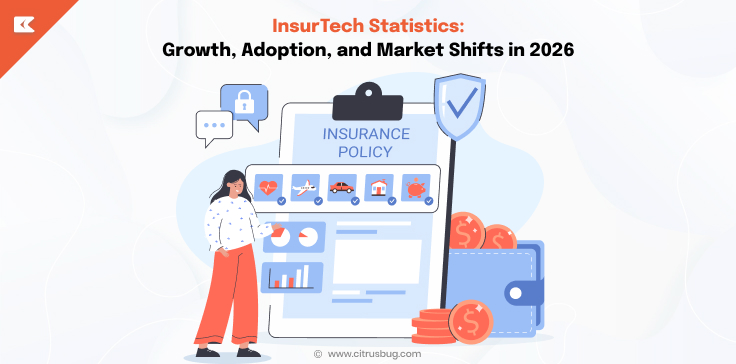Top 10 Backend Development Trends Driving Innovation In 2025
- April 25, 2025
-
2730 Views
- by Ishan Vyas

Introduction
The inflow of technology is transforming the world rapidly every day. Backend development is one of the leading innovations to be achieved in 2025. With every operating website or application, there is efficient system software that handles data storage, request processing, and guarantees a wonderful customer experience.
The overall software development market that includes backend engineering in 2025 is expected to grow at a CAGR of 11.7% to $1.3 trillion. Spending on enterprise software is also expected to hit $1.25 trillion by 2025, indicating higher spending on increasable, agile, and fundamental holistic value tools. This article discusses the best backend development trends that are changing the building and scaling practices of digital solutions.
What Is Backend Development?
Backend development is considered the server-side of any software applications. It is primarily concerned with databases, servers, APIs, and the logic that drives front-end functionalities. Backend developers build and manage the architecture that supports everything. It doesn’t matter if it’s a banking application or a social media application, backend systems manage data access, user verification, and business workflows.
The backend is more technical in nature and relies heavily on programming languages like Python, Node.js, PHP, or even frameworks such as Django and Express.js. A well-structured backend is critical to the optimal functionality of an application’s front-end.
Evolution Of The Backend Development Market
Backend development has evolved tremendously. A decade ago, many applications were using monolithic architectures. These systems were often difficult to maintain and scale. Nowadays, businesses are migrating towards microservices, serverless, and cloud-native solutions.
As reports from Cognitive Market Research indicate, The Back End Developer Training Market is estimated to grow from $2.74 billion in 2025 to $5.99 billion by 2033. This illustrates the growing need for skilled backend developers and modern tools. In fact, backend engineers are in high demand and that is expected to grow over 20% from 2021 to 2031, which is significantly faster than other occupations. With the growth of digital engagement, the demand for well-structured efficient backend systems is unprecedented.
Mobile app backend development is one of the forces driving this growth. As mobile applications evolve, their backend management requirements are increasingly sophisticated. Companies are spending a great deal on tangible backend infrastructure to enable fast, secure, scalable mobile experiences.
Top 10 Backend Development Trends In 2025
The year 2025 comes with new expectations for backend developers focusing on cloud, security, and databases accompanying an expected job growth rate of 8% through 2033. Following the latest backend development trends ensures that backends remain scalable, secure, and future-ready.
1. Microservices Architecture
Microservices split applications into distinct services which communicate through API calls. This structure allows better fault tolerance, diagnostics, scalability, and ease in updates. It is also possible for multiple teams to work on different services in parallel which reduces the overall development time. By the end of 2025, MoldStud estimates that more than 70% of applications will implement microservices architecture.
2. Serverless Computing
With serverless computing, developers can concentrate on writing application logic without worrying about server setup and maintenance, which is handled by cloud vendors. It is particularly beneficial for services with variable workloads as it lowers expenditure on infrastructure and automatically adjusts resources according to need. This model is being embraced more and more for event-based and micro-task-driven applications because it enhances time-to-market.
3. Edge Computing
As opposed to relying on cloud servers, edge computing takes data processing nearer to the source, whether that’s IoT devices or end-users. This results in lower latency, enhanced speed, and better overall user experience. The technology is indispensable in real-time applications of healthcare monitoring, smart devices, autonomous vehicles, and cloud gaming.
4. AI-Powered Automation
AI is changing the backend development landscape by automating critical strategies such as bug fixing, coding, performance reviewing, and continuous integration. This provides faster and more reliable software releases. By 2025, 92% of developers in the USA claimed to have AI tools, with some startups stating AI aids in coding around 95% of their codebase.
5. API-First Development
In API-first development, teams design APIs before the actual application, ensuring they are standardized, reusable, and scalable. This method streamlines integration with third-party tools and frontends, and enhances collaboration between teams. It promotes modularity, future-proofing backend systems for multi-platform and multi-device environments from the very beginning.
6. GraphQL Adoption
GraphQL is now being used as a resourceful substitute for REST APIs. It provides clients the freedom to request specific information, thus tailoring the information requested to prevent both unnecessary data and scarce requested data. This enhances performance especially for mobile and single page applications. Its strong typing system, as well as numerous other development friendship classed tools, further improves collaboration with the back and front end of the system.
7. Low-Code And No-Code Platforms
The described platforms permit the rapid development of an application with basic coding, utilizing drag-and-drop visuals and pre-made modules. It is predicted that in 2025 approximately 70% of business applications will be created in this manner. Such platforms enable non-specialist personnel to assist in the role of backend functionality and allow businesses to scale more quickly at a lower cost.
8. Enhanced Security Practices
Because technology is constantly changing, cyber threats are becoming more and more dangerous and prevalent. As a result, zero trust frameworks, multi-authentication, data encyptipon and other defenses alongside automated vulnerability scanning have become common practice. To ensure complete security DevSecOps employs protective measures throughout the development life cycle.
9. Containerization With Kubernetes
Containers bundle applications with their associated modules, guaranteeing consistent performance across various environments. The most popular tool for automating deployment, scaling, and management of containerized applications is Kubernetes. It enables high availability, load balancing, and rollback, distinguishing it as a foundational technology for contemporary cloud-native backend systems.
10. Observability Tools
Observability tools provide insights into application health, user behavior, and system performance through metrics, logs, and traces. These tools help detect anomalies early, reduce downtime, and improve debugging efficiency. As backend systems grow more complex, observability becomes essential for maintaining reliability and optimizing user experiences.
Benefits And Impact Of Backend Development Trends
New trends in backend development come with a variety of advantages, including:
- Scalability: Microservices and serverless architectures facilitate scaling of applications in relation to the demand.
- Speed: The use of AI and automation enables faster development, testing, and deployment of applications.
- Security: Sensitive user information and systems are better protected from unauthorized access through improved practices.
- Flexibility: API-first design and GraphQL provide better integration options.
- Cost Savings: The use of serverless and containerized models reduces infrastructure expenditures.
These benefits enable businesses to remain competitive and offer improved experiences to users. There is a shift in backend development from supporting business functions to improving speed, dependability, and innovation.
Backend Development Statistics And Market – By Regional Analysis
The global software development market, which includes backend technologies, is expected to reach $741 billion by 2025 and grow to $896 billion by 2029, with a CAGR of 4.87%.
North America remains at the forefront of backend software development, accounting for 44% of the software production revenue. This is followed by Europe and the Asia-Pacific. These regions are experiencing an increase in web development framework and cloud-based solution adoption.
Backend as a Service (BaaS) is experiencing fast growth in all areas as well. According to Grand View Research, the BaaS market will expand significantly as more businesses look for easily adjustable backend infrastructure.
At the same time, there is an increasing demand for custom software development in India, Eastern Europe, and Latin America. These regions provide a rich pool of skilled professionals along with affordable backend project services.
Conclusion
Backend development is at the core of all digital advancements. Companies are adopting new technologies that suit their needs in performance, flexibility and scalability. Everything from AI Automation to serverless architecture serves a purpose to changing the backend.
Keeping up to date with backend development can help organizations build more efficient applications which in turn helps gain an edge over competitors. As a business owner or developer, these updates are changing the landscape of technology. Whether you’re a startup or an enterprise, aligning your strategy with backend development trends can future-proof your tech stack.


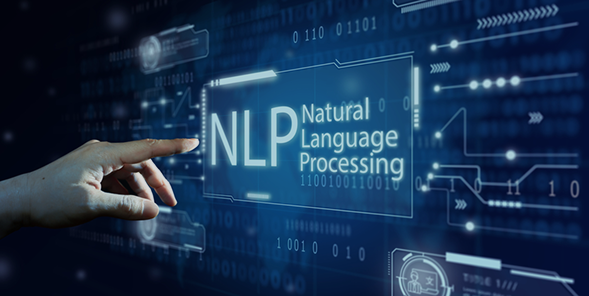
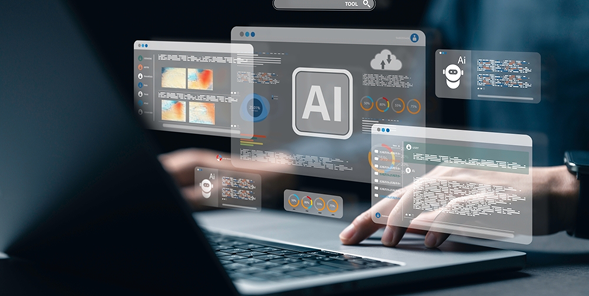

 SaaS Development
SaaS Development Web Application Development
Web Application Development Mobile Application Development
Mobile Application Development Custom Software Development
Custom Software Development Cloud Development
Cloud Development DevOps Development
DevOps Development MVP Development
MVP Development Digital Product Development
Digital Product Development Hire Chatbot Developers
Hire Chatbot Developers Hire Python Developers
Hire Python Developers Hire Django Developers
Hire Django Developers Hire ReactJS Developers
Hire ReactJS Developers Hire AngularJS Developers
Hire AngularJS Developers Hire VueJS Developers
Hire VueJS Developers Hire Full Stack Developers
Hire Full Stack Developers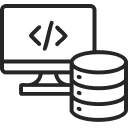 Hire Back End Developers
Hire Back End Developers Hire Front End Developers
Hire Front End Developers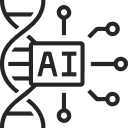 AI Healthcare Software Development & Consulting
AI Healthcare Software Development & Consulting Healthcare App Development
Healthcare App Development EHR Software Development
EHR Software Development Healthcare AI Chatbot Development
Healthcare AI Chatbot Development Telemedicine App Development Company
Telemedicine App Development Company Medical Billing Software Development
Medical Billing Software Development Fitness App Development
Fitness App Development RPM Software Development
RPM Software Development Medicine Delivery App Development
Medicine Delivery App Development Medical Device Software Development
Medical Device Software Development Patient Engagement Software Solutions
Patient Engagement Software Solutions Mental Health App Development
Mental Health App Development Healthcare IT Consulting
Healthcare IT Consulting Healthcare CRM Software Development
Healthcare CRM Software Development Healthcare IT Managed Services
Healthcare IT Managed Services Healthcare Software Testing services
Healthcare Software Testing services Medical Practice Management Software
Medical Practice Management Software Outsourcing Healthcare IT Services
Outsourcing Healthcare IT Services IoT Solutions for Healthcare
IoT Solutions for Healthcare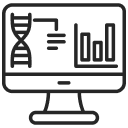 Medical Image Analysis Software Development Services
Medical Image Analysis Software Development Services Lending Software Development Services
Lending Software Development Services Payment Gateway Software Development
Payment Gateway Software Development Accounting Software Development
Accounting Software Development AI-Driven Banking App Development
AI-Driven Banking App Development Insurance Software Development
Insurance Software Development Finance Software Development
Finance Software Development Loan Management Software Development
Loan Management Software Development Decentralized Finance Development Services
Decentralized Finance Development Services eWallet App Development
eWallet App Development Payment App Development
Payment App Development Money Transfer App Development
Money Transfer App Development Mortgage Software Development
Mortgage Software Development Insurance Fraud Detection Software Development
Insurance Fraud Detection Software Development Wealth Management Software Development
Wealth Management Software Development Cryptocurrency Exchange Platform Development
Cryptocurrency Exchange Platform Development Neobank App Development
Neobank App Development Stock Trading App Development
Stock Trading App Development AML software Development
AML software Development Web3 Wallet Development
Web3 Wallet Development Robo-Advisor App Development
Robo-Advisor App Development Supply Chain Management Software Development
Supply Chain Management Software Development Fleet Management Software Development
Fleet Management Software Development Warehouse Management Software Development
Warehouse Management Software Development LMS Development
LMS Development Education App Development
Education App Development Inventory Management Software Development
Inventory Management Software Development Property Management Software Development
Property Management Software Development Real Estate CRM Software Development
Real Estate CRM Software Development Real Estate Document Management Software
Real Estate Document Management Software Construction App Development
Construction App Development Construction ERP Software Development
Construction ERP Software Development







